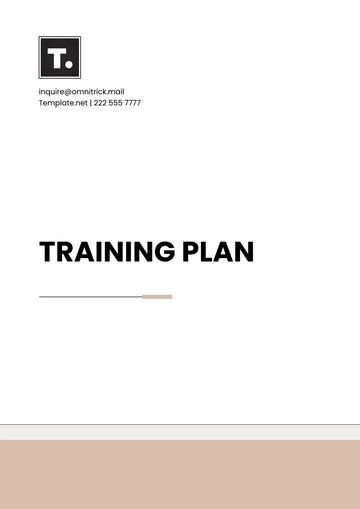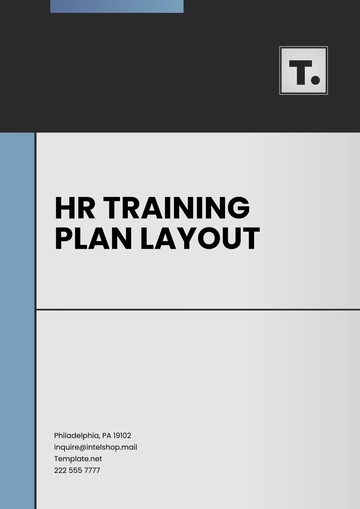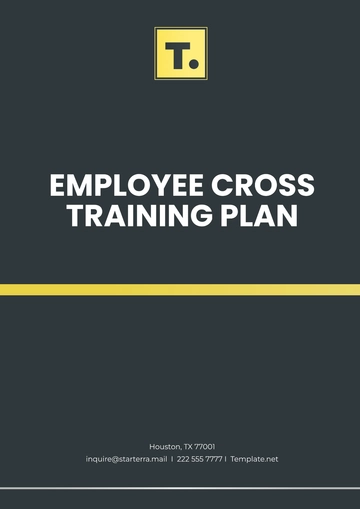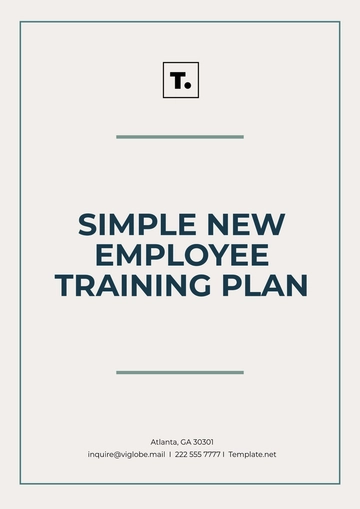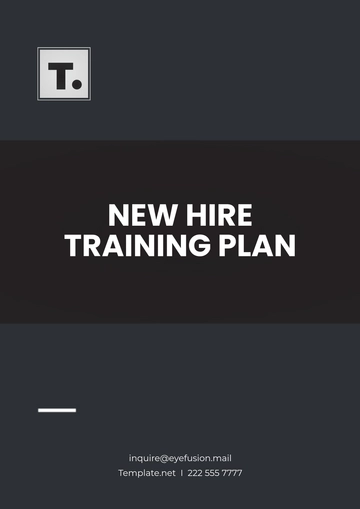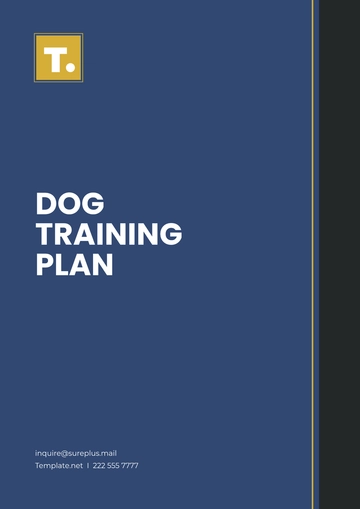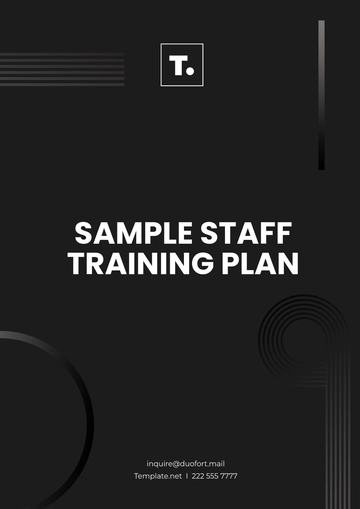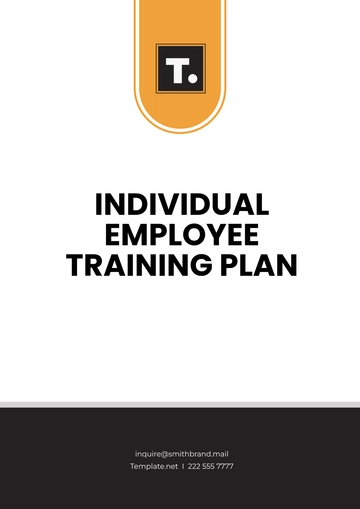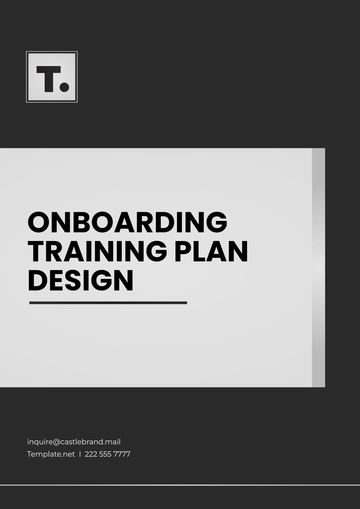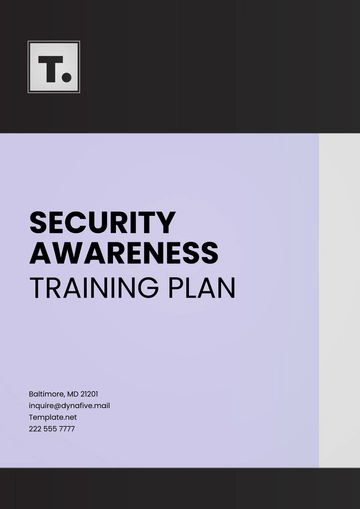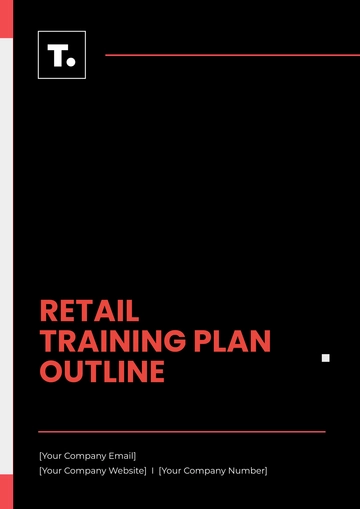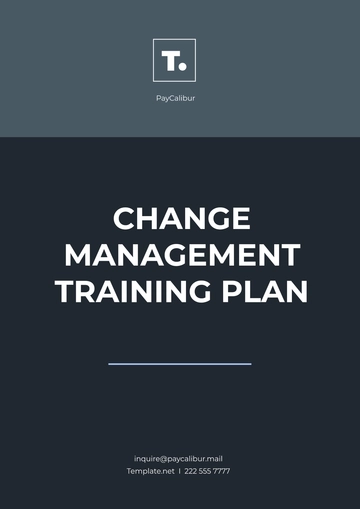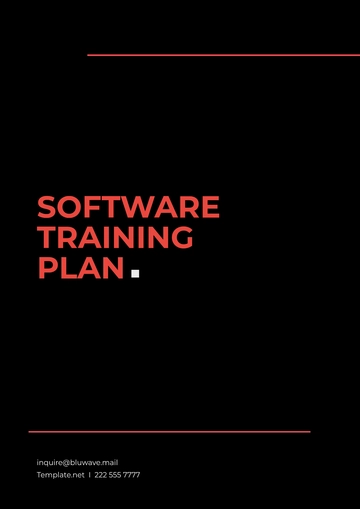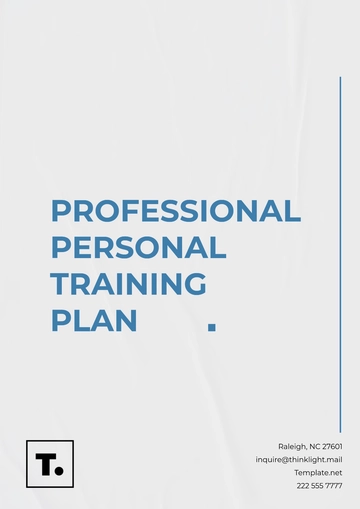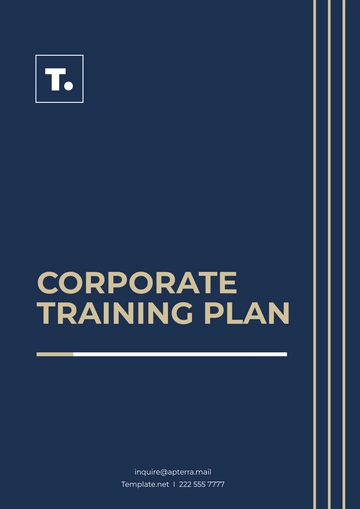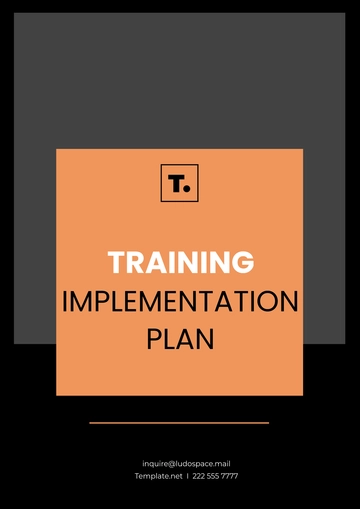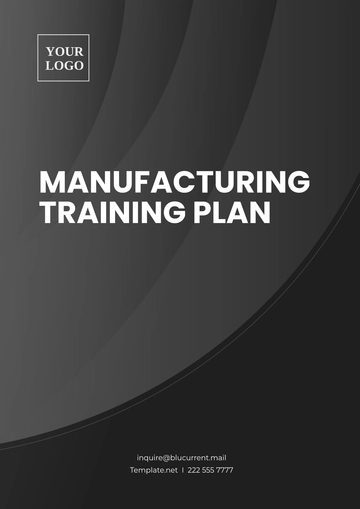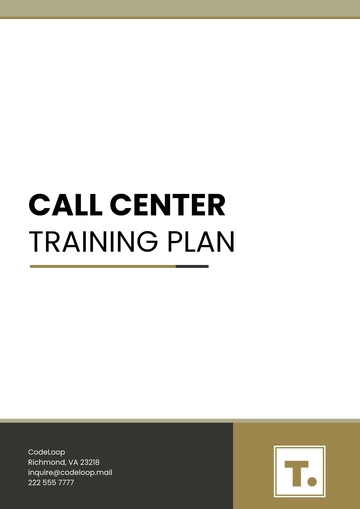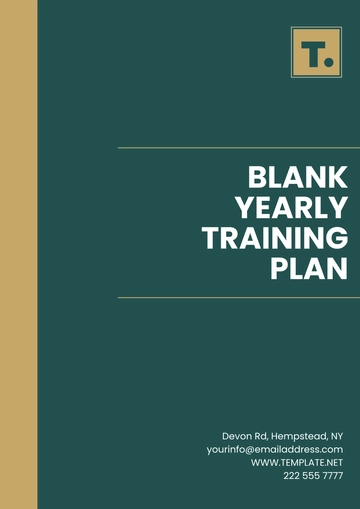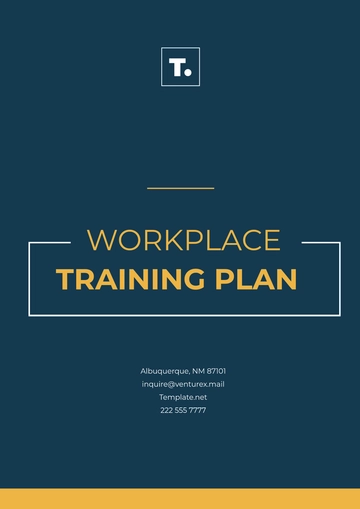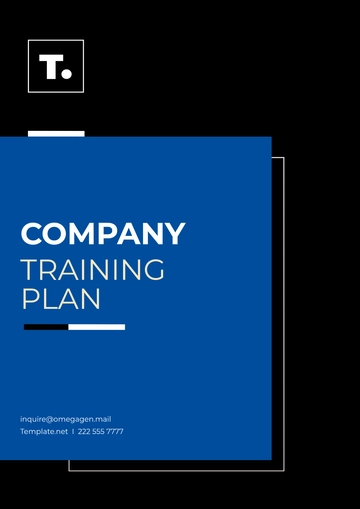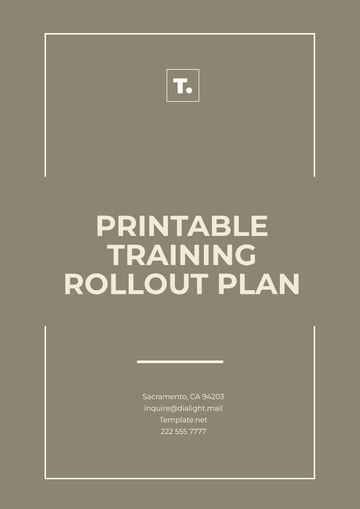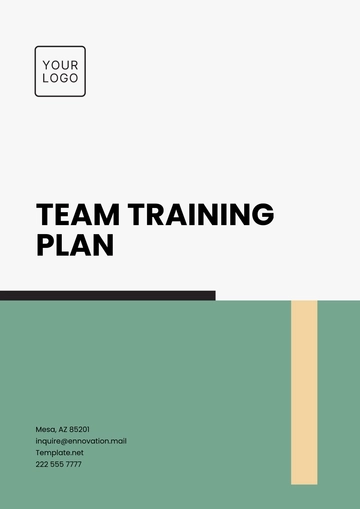Free Training Plan
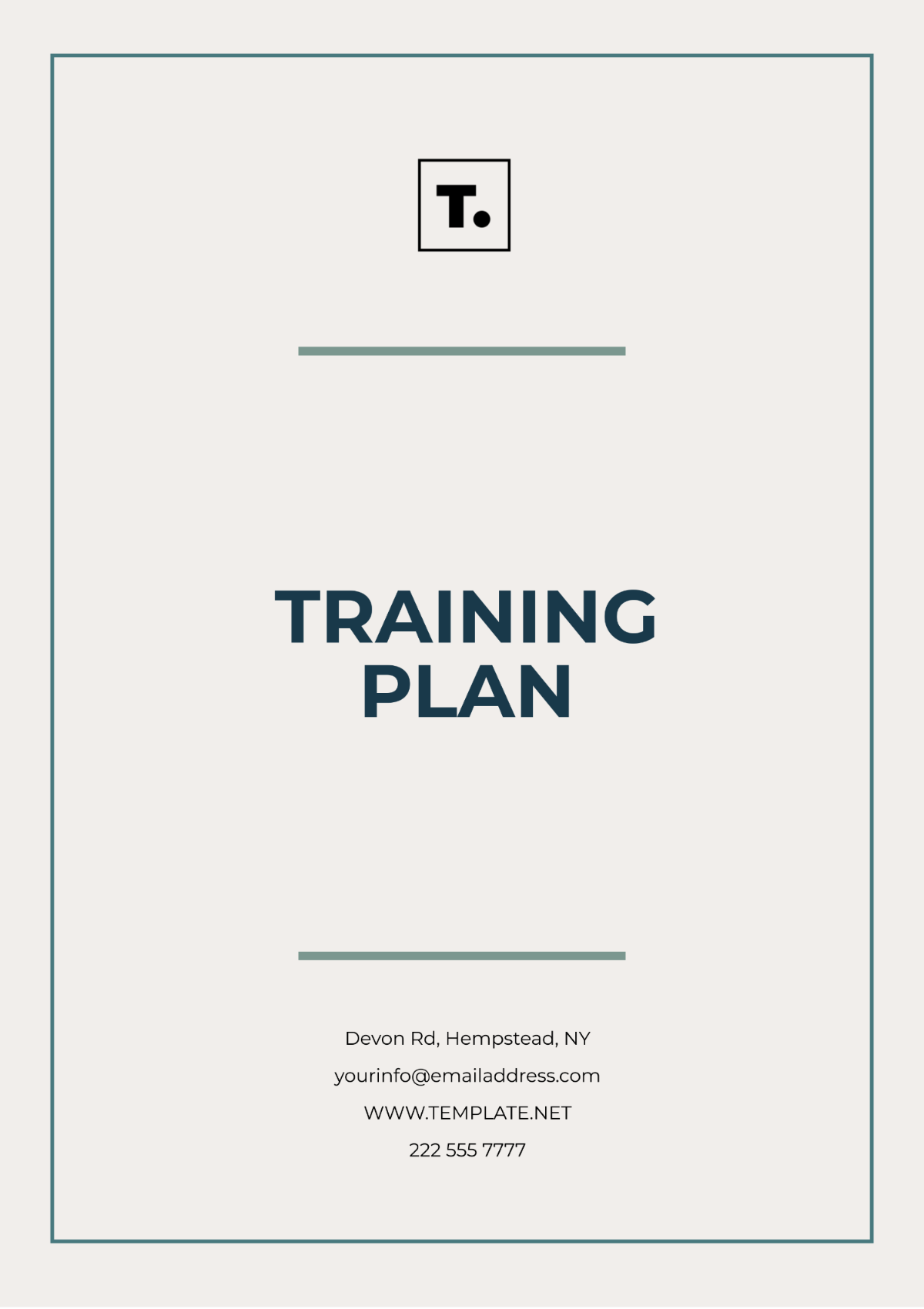
Prepared by: [Your Name], Training and Development Manager
Date: January 9, 2066
I. Executive Summary
This training plan outlines our approach to developing and implementing a comprehensive training program for [Your Company Name]. The primary objectives are to enhance employee skills, improve job performance, and foster professional growth. Investing in our workforce aims to increase overall productivity and job satisfaction.
II. Company Overview
Company Name: [Your Company Name]
Industry: Sustainable Technology
Date: June 1, 2050
A. Mission Statement
[Your Company Name] is committed to pioneering cutting-edge, sustainable technology solutions that drive meaningful environmental progress. By integrating innovation and sustainability, we aim to empower communities and industries to create a cleaner, greener, and more resilient future.
B. Vision Statement
To become the world’s foremost leader in sustainable technology, revolutionizing industries with innovative, eco-friendly solutions. We envision a future where our technologies shape a healthier planet, elevate global living standards, and inspire lasting positive change.
C. Core Values
Sustainability
Innovation
Integrity
Collaboration
III. Training Needs Analysis
A. Goals and Objectives
Enhance job-specific skills and knowledge.
Improve overall employee performance.
Foster a culture of continuous learning and professional development.
Increase employee engagement and job satisfaction.
Prepare employees for future roles and responsibilities.
B. Target Audience
New Employees: Onboarding and initial training.
Current Employees: Skill enhancement and professional development.
Leadership Team: Leadership and management skills development.
Technical Staff: Advanced technical training and certifications.
IV. Training Program Overview
A. Training Modules
Module 1: Onboarding and Orientation
Introduction to company culture, values, and policies.
Overview of company structure and key departments.
Basic job functions and expectations.
Module 2: Job-Specific Skills
Training on specific tools and software.
Role-specific procedures and best practices.
Performance standards and metrics.
Module 3: Professional Development
Communication and teamwork skills.
Time management and productivity techniques.
Leadership and management training.
Module 4: Advanced Technical Training
Specialized technical skills and certifications.
Problem-solving and critical thinking exercises.
Latest industry trends and technologies.
B. Training Methods
Instructor-Led Training (ILT): Classroom-based training sessions.
E-Learning: Online courses and webinars.
Workshops and Seminars: Interactive group training.
On-the-Job Training (OJT): Hands-on training and mentoring.
Self-Paced Learning: Access to online resources and materials.
V. Implementation Plan
A. Timeline
Training Activity | Timeline |
|---|---|
Needs Assessment | Q1 |
Develop Training Materials | Q2 |
Roll Out Onboarding Program | Q3 |
Conduct Job-Specific Training | Q3 - Q4 |
Launch Professional Development Series | Q4 |
Evaluate and Adjust Program | Ongoing |
B. Responsibilities
Responsible Party | Responsibilities |
|---|---|
[Your Name] | Overall program management |
HR Department | Coordination of training sessions |
Department Heads | Identify training needs, and provide trainers |
External Trainers/Consultants | Deliver specialized training modules |
C. Resources Required
Budget for training materials and external trainers: $100,000
Training facilities and equipment.
Access to e-learning platforms and software.
VI. Monitoring and Evaluation
A. Key Performance Indicators (KPIs)
Completion Rates: Percentage of employees completing training programs.
Employee Feedback: Satisfaction scores from training evaluations.
Performance Metrics: Improvement in job performance post-training.
Retention Rates: Employee retention rates before and after training implementation.
B. Feedback and Improvement
Collect feedback through surveys and focus groups.
Regularly review and update training materials based on feedback.
Conduct quarterly review meetings to assess program effectiveness and make necessary adjustments.
VII. Risk Management
Identify potential risks such as low participation rates or inadequate resources. Develop contingency plans to address these risks and ensure the successful implementation of the training program. For example:
Low Participation Rates: Offer incentives for completion, such as certificates or recognition.
Inadequate Resources: Secure additional funding or utilize cost-effective training methods.
VIII. Conclusion
This training plan outlines our commitment to enhancing the skills and capabilities of our workforce. By implementing the proposed training programs and closely monitoring their effectiveness, we can achieve our objectives and foster a culture of continuous learning within [Your Company Name].
- 100% Customizable, free editor
- Access 1 Million+ Templates, photo’s & graphics
- Download or share as a template
- Click and replace photos, graphics, text, backgrounds
- Resize, crop, AI write & more
- Access advanced editor
Unlock your potential with Template.net's Training Plan Template! This fully customizable and editable template is designed to streamline your training programs. Effortlessly tailor it to your needs using our innovative Ai Editor Tool. Perfect for businesses of all sizes, it ensures your training sessions are organized and effective. Start creating your ideal training plan today!
You may also like
- Finance Plan
- Construction Plan
- Sales Plan
- Development Plan
- Career Plan
- Budget Plan
- HR Plan
- Education Plan
- Transition Plan
- Work Plan
- Training Plan
- Communication Plan
- Operation Plan
- Health And Safety Plan
- Strategy Plan
- Professional Development Plan
- Advertising Plan
- Risk Management Plan
- Restaurant Plan
- School Plan
- Nursing Home Patient Care Plan
- Nursing Care Plan
- Plan Event
- Startup Plan
- Social Media Plan
- Staffing Plan
- Annual Plan
- Content Plan
- Payment Plan
- Implementation Plan
- Hotel Plan
- Workout Plan
- Accounting Plan
- Campaign Plan
- Essay Plan
- 30 60 90 Day Plan
- Research Plan
- Recruitment Plan
- 90 Day Plan
- Quarterly Plan
- Emergency Plan
- 5 Year Plan
- Gym Plan
- Personal Plan
- IT and Software Plan
- Treatment Plan
- Real Estate Plan
- Law Firm Plan
- Healthcare Plan
- Improvement Plan
- Media Plan
- 5 Year Business Plan
- Learning Plan
- Marketing Campaign Plan
- Travel Agency Plan
- Cleaning Services Plan
- Interior Design Plan
- Performance Plan
- PR Plan
- Birth Plan
- Life Plan
- SEO Plan
- Disaster Recovery Plan
- Continuity Plan
- Launch Plan
- Legal Plan
- Behavior Plan
- Performance Improvement Plan
- Salon Plan
- Security Plan
- Security Management Plan
- Employee Development Plan
- Quality Plan
- Service Improvement Plan
- Growth Plan
- Incident Response Plan
- Basketball Plan
- Emergency Action Plan
- Product Launch Plan
- Spa Plan
- Employee Training Plan
- Data Analysis Plan
- Employee Action Plan
- Territory Plan
- Audit Plan
- Classroom Plan
- Activity Plan
- Parenting Plan
- Care Plan
- Project Execution Plan
- Exercise Plan
- Internship Plan
- Software Development Plan
- Continuous Improvement Plan
- Leave Plan
- 90 Day Sales Plan
- Advertising Agency Plan
- Employee Transition Plan
- Smart Action Plan
- Workplace Safety Plan
- Behavior Change Plan
- Contingency Plan
- Continuity of Operations Plan
- Health Plan
- Quality Control Plan
- Self Plan
- Sports Development Plan
- Change Management Plan
- Ecommerce Plan
- Personal Financial Plan
- Process Improvement Plan
- 30-60-90 Day Sales Plan
- Crisis Management Plan
- Engagement Plan
- Execution Plan
- Pandemic Plan
- Quality Assurance Plan
- Service Continuity Plan
- Agile Project Plan
- Fundraising Plan
- Job Transition Plan
- Asset Maintenance Plan
- Maintenance Plan
- Software Test Plan
- Staff Training and Development Plan
- 3 Year Plan
- Brand Activation Plan
- Release Plan
- Resource Plan
- Risk Mitigation Plan
- Teacher Plan
- 30 60 90 Day Plan for New Manager
- Food Safety Plan
- Food Truck Plan
- Hiring Plan
- Quality Management Plan
- Wellness Plan
- Behavior Intervention Plan
- Bonus Plan
- Investment Plan
- Maternity Leave Plan
- Pandemic Response Plan
- Succession Planning
- Coaching Plan
- Configuration Management Plan
- Remote Work Plan
- Self Care Plan
- Teaching Plan
- 100-Day Plan
- HACCP Plan
- Student Plan
- Sustainability Plan
- 30 60 90 Day Plan for Interview
- Access Plan
- Site Specific Safety Plan
